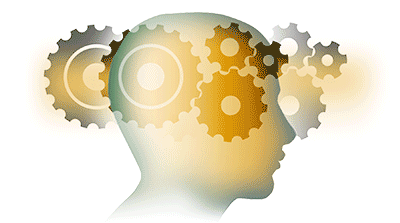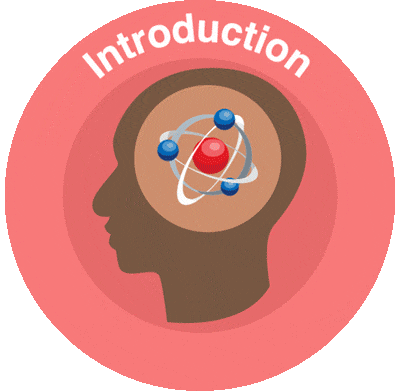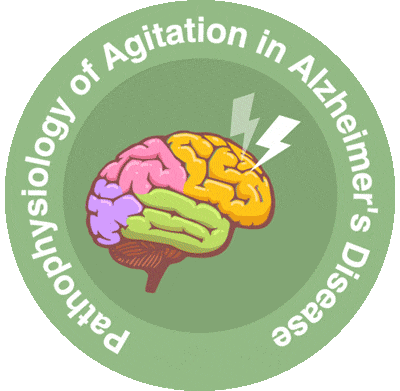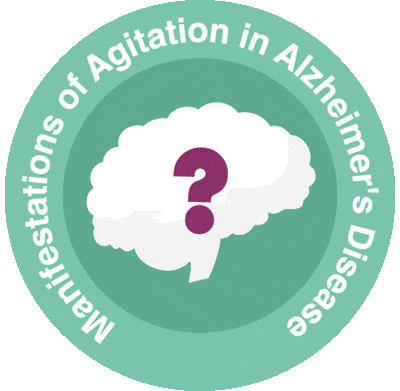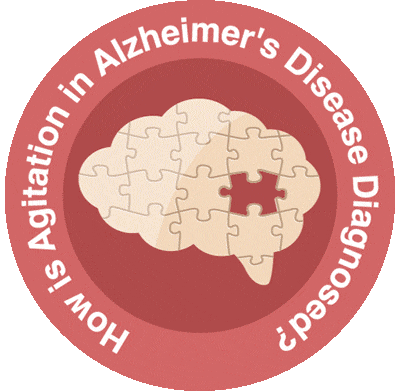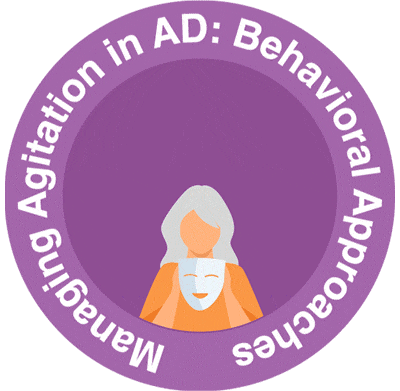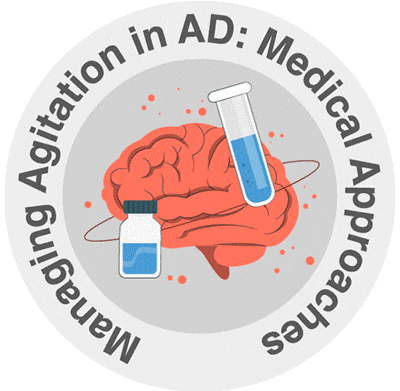 This activity is provided by Med Learning Group.
This activity is provided by Med Learning Group.
This activity is supported by an educational grant from Otsuka America Pharmaceutical, Inc. and Lundbeck.
Copyright © 2024 Med Learning Group. Built by Divigner. All Rights Reserved.

Clinical Toolkit
Agitation, defined as excessive motor or verbal activity without any focus or intent, is a common behavioral symptom associated with Alzheimer’s disease, affecting up to 80% of patients.1–3
It places a substantial burden on patients, caregivers, and the healthcare system, with agitation scores significantly correlated with an increased need for professional caregivers, institutionalization, and psychiatric-ward hospitalization, as well as the use of antipsychotic and antidepressant medications.
Agitation is also associated with significantly increased healthcare costs due, in part, to the greater risk of institutionalization. One study published in 2017 estimated the economic burden of agitation at about $4.3 billion in the US alone. 1,2,4
References
- Carrarini C, Russo M, Dono F, et al. Agitation and dementia: Prevention and treatment strategies in acute and chronic conditions. Front Neurol. 2021;12:644317.
- Jones E, Aigbogun MS, Pike J, Berry M, Houle CR, Husbands J. Agitation in dementia : Real-world impact and burden on patients and the healthcare system. J Alzheimers Dis. 2021;83:89-101.
- Senanarong V, Cummings JL, Fairbanks L, et al. Agitation in Alzheimer’s disease is a manifestation of frontal lobe dysfunction. Dement Geriatr Cogn Disord. 2004;17:14-20.
- Cloutier M, Gauthier-Loiselle M, Gagnon-Sanschagrin P, et al. Institutionalization risk and costs associated with agitation in Alzheimer’s disease. Alzheimers Dement (NY). 2019;5:851-861.
